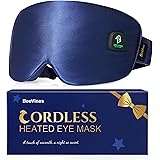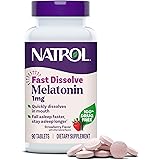An astounding number of individuals, with reports suggesting up to 70% of the population, will experience neck pain at some point in their lives. This common complaint isn’t merely an inconvenience; it significantly impacts sleep quality, productivity, and overall well-being. The good news? Often, a critical yet overlooked component of alleviating this discomfort lies in our sleep setup – specifically, the pillow. As Dr. Meenan highlighted in the accompanying video, selecting the right pillows for neck pain can be a game-changer for achieving proper cervical support and restful sleep. This comprehensive guide delves deeper into the science behind effective neck pain relief and expands on those top recommendations, equipping you with the expert insights needed to make an informed choice.
Understanding Cervical Support: The Science Behind Neck Pain Relief
The human neck, or cervical spine, is an intricate structure comprising seven small vertebrae (C1-C7) supporting the head’s significant weight while allowing for a remarkable range of motion. Maintaining the natural curvature, known as the cervical lordosis, is paramount for spinal health. When we sleep, an unsupportive pillow can disrupt this alignment, leading to muscle strain, nerve compression, and cumulative tissue damage that manifests as neck pain.
Firstly, an ergonomically designed pillow works by filling the gap between the head and shoulders, regardless of whether you’re a back or side sleeper. This ensures that the head is not tilted too far forward, backward, or to the side. Secondly, it helps to evenly distribute pressure across the head and neck, mitigating the formation of pressure points that can restrict blood flow and irritate delicate structures. Ultimately, the goal is to keep the cervical spine in a neutral position, mirroring its posture when standing correctly. This allows the neck muscles and ligaments to relax and recover throughout the night, reducing morning stiffness and chronic pain.
Key Features to Look for in a Cervical Support Pillow
Choosing the best pillow for neck pain relief requires understanding what constitutes effective support. While personal preference plays a role, certain biomechanical principles are non-negotiable.
One: **Optimal Loft and Firmness.** The pillow’s loft (height) should perfectly match the distance between your head and the mattress, aligning with your shoulder width and sleep position. A pillow that’s too high or too low will force your neck into an unnatural angle. Firmness is equally crucial; a pillow that’s too soft won’t offer adequate support, while one that’s too firm can create uncomfortable pressure points.
Two: **Ergonomic Contouring.** Many effective neck pain pillows feature a contoured design, often with a raised edge to support the neck and a depression for the head. This specific shaping is engineered to cradle the cervical curve, offering targeted support and minimizing unnecessary movement during sleep. This is particularly beneficial for back sleepers, as it helps maintain the natural C-curve of the neck.
Three: **Adjustability.** For many, a “one-size-fits-all” approach to pillows falls short. Adjustable pillows, which allow you to add or remove fill material, provide a customized loft and firmness. This is incredibly valuable for individuals with unique anatomical needs or those who frequently change sleep positions, ensuring consistent spinal alignment.
Four: **Material Science.** The material directly impacts comfort, support, and durability. Memory foam, known for its viscoelastic properties, conforms to the body’s contours, offering excellent pressure relief and support. Latex is another resilient option, providing a bouncier feel with good support. Shredded foam and microfiber blends offer a softer, more pliable feel, often found in adjustable pillows, allowing for personalized shaping.
The Top Pillow Recommendations for Neck Pain
Building upon the expert selections from Dr. Meenan, let’s delve deeper into why these three pillows stand out as superior choices for managing and alleviating neck pain, often offering specialized solutions for various sleep profiles.
1. The Nolah Squishy Pillow: Customizable Comfort and Support
As highlighted in the video, the Nolah Squishy Pillow earns its top spot due to its exceptional adjustability. This innovative design allows users to customize the pillow’s loft and firmness by adding or removing its proprietary blend of shredded foam and fibers. This bespoke approach is particularly advantageous because ideal pillow height is highly individual, depending on factors like shoulder width, head size, and preferred sleep position.
For individuals who might alternate between back and side sleeping, or those with specific anatomical considerations like kyphosis or scoliosis, the Nolah Squishy provides unparalleled adaptability. It ensures that the cervical spine maintains a neutral alignment throughout the night, whether you need a higher loft to fill the gap for side sleeping or a lower profile for supine comfort. This prevents the common issue of the neck being forced into flexion or extension, which are significant contributors to morning stiffness and chronic cervical discomfort.
2. The TEMPUR-Neck Pillow: Precision Ergonomic Contouring
The TEMPUR-Neck pillow, true to its name, leverages Tempur-Pedic’s renowned viscoelastic foam technology to offer advanced ergonomic contouring. Its distinctive wave-like shape features a higher ridge for neck support and a gentle depression to cradle the head. This design is meticulously crafted to support the natural curve of your cervical spine, effectively reducing tension and pressure points.
Crucially, this pillow is engineered to accommodate both back and side sleepers seamlessly. For back sleepers, the contour supports the cervical lordosis, ensuring the head and neck are in perfect alignment with the rest of the spine. For side sleepers, the higher ridge fills the space between the shoulder and neck, preventing lateral flexion and keeping the spine straight. The high-density memory foam provides superior pressure equalization, conforming precisely to the unique contours of your head and neck while offering consistent, unwavering support throughout the night. This sustained support minimizes tossing and turning, leading to deeper, more restorative sleep.
3. The Coop Home Goods Original Pillow: Tailored for Side Sleepers
The Coop Home Goods Original Pillow has garnered significant acclaim, especially among side sleepers battling neck pain. Much like the Nolah Squishy, its key strength lies in its adjustability, utilizing a blend of shredded memory foam and microfiber. This allows side sleepers to achieve the exact loft needed to bridge the crucial gap between their shoulder and ear.
For a side sleeper, if a pillow is too low, the head sags, straining the neck laterally. If it’s too high, the neck is pushed upwards unnaturally. The Coop Home Goods Original empowers users to fine-tune the fill to create a perfectly level and supportive surface. This ensures that the cervical spine remains in a neutral, straight line, preventing the lateral flexion that commonly leads to stiffness and pain. The hypoallergenic material and breathability also contribute to an overall superior sleep experience, making it a compelling choice for those seeking customized and effective pillows for neck pain, especially in the side-sleeping position.
Beyond the Pillow: Holistic Approaches to Neck Pain Management
While an optimal pillow is an indispensable tool in the fight against neck pain, it is often most effective when integrated into a broader strategy for spinal health. Firstly, evaluating your overall sleep posture is essential. Are you sleeping on a supportive mattress? Is your body aligned from head to toe? An old, sagging mattress can undermine even the best pillow’s efforts.
Secondly, consider your daily habits. Prolonged periods of looking down at phones (text neck) or slumping at a desk can contribute significantly to cervical strain. Incorporating regular breaks, stretching exercises, and maintaining ergonomic workstation setups are vital. Furthermore, strengthening the core and postural muscles can provide better overall support for the spine, reducing the burden on your neck. Lastly, consult with healthcare professionals like chiropractors, physical therapists, or your primary care physician to address persistent neck pain. They can offer personalized advice, exercises, or treatments that complement the benefits of a supportive pillow, ensuring you find lasting relief from discomfort.








